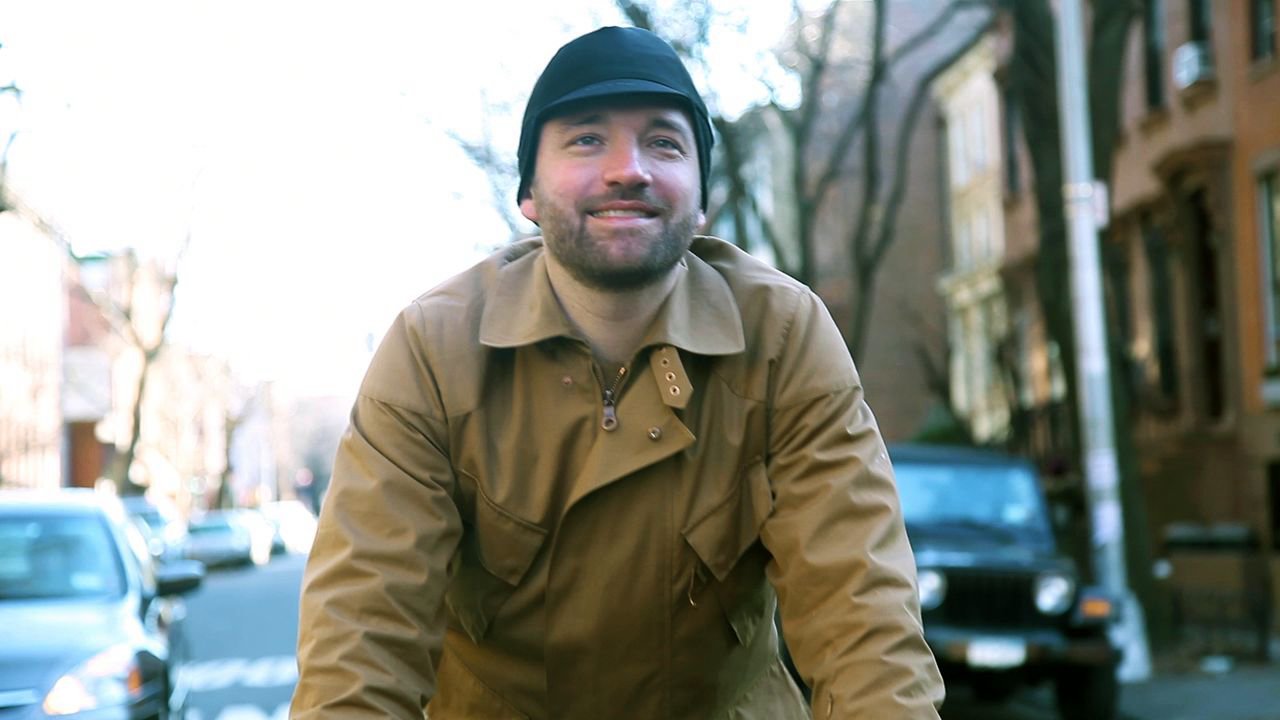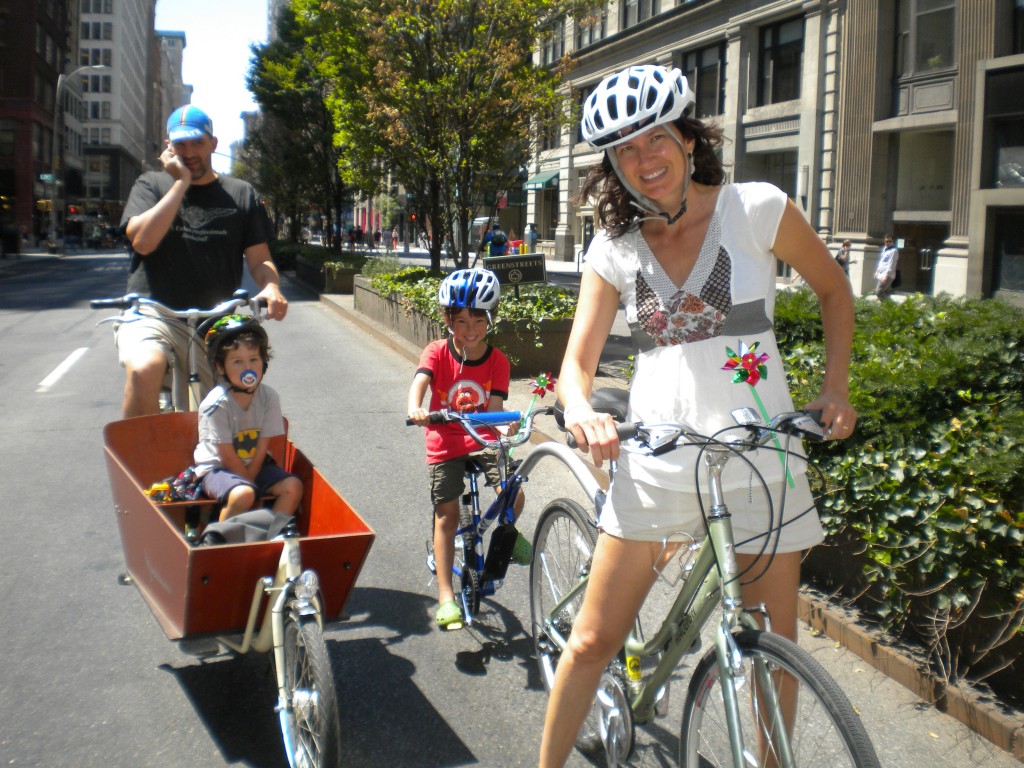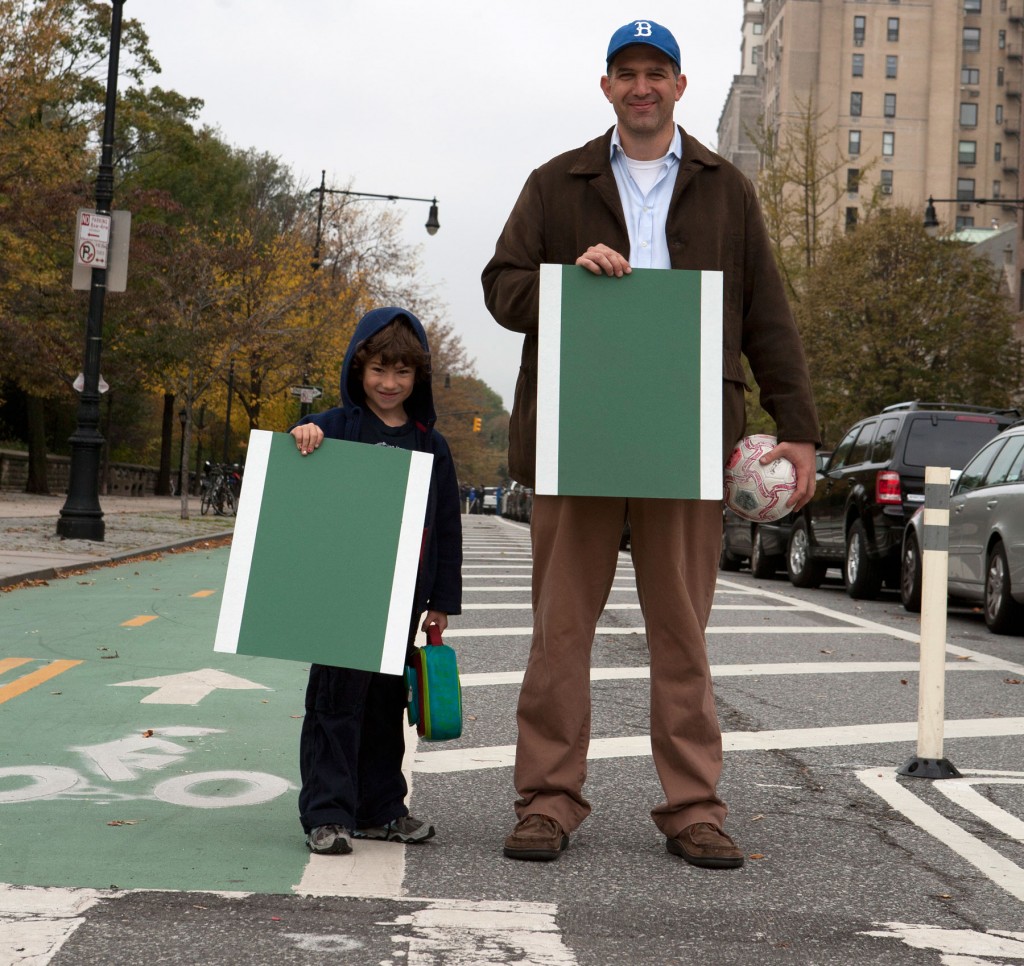
Bike Snob Eben Weiss in New York City. Screenshot via Vimeo.
I got off the train and started to jog. I was in Inwood at the very northern end of Manhattan and I was late for my meeting. Given that the man I was holding up has made his name as a scathing critic, I was a little worried. But when I arrived at the Indian Road Cafe, Eben Weiss greeted me at the door and quickly forgave me when he found out I was visiting from a subwayless city. As we waited for our waitress, Weiss explained that the park across the street from us is supposedly where the Dutch bought Manhattan from the Lenape Indians and that the confluence of the Harlem and Hudson Rivers was just around under the Henry Hudson bridge into the Bronx.
Weiss is, of course, Bike Snob NYC. He launched the wildly popular blog in 2007 as an anonymous and acerbic cultural critic, picking apart the booming fixed gear fad, the racing world, and the bike industry with daily posts. In 2010, as a lead up to the publication of his first book, Weiss came out to the world as the Snob. At the time, people wondered if the unveiling would mean the end of the blog. But five years and another two books later, Weiss is still posting daily as one of the most vocal cycling world pundits. Over the course of our lengthy lunch, we talked about the start of his blogging career, his evolution as a bike advocate, the oddities of bike world celebrity, becoming pals with Lance Armstrong, and much more.


